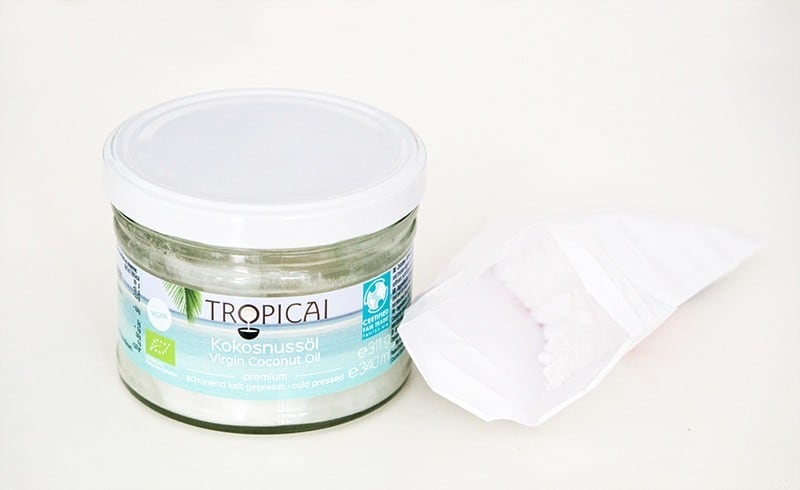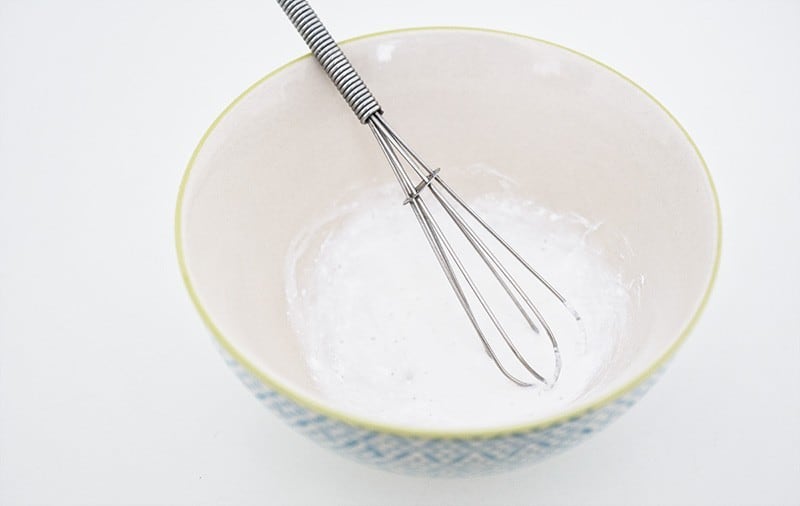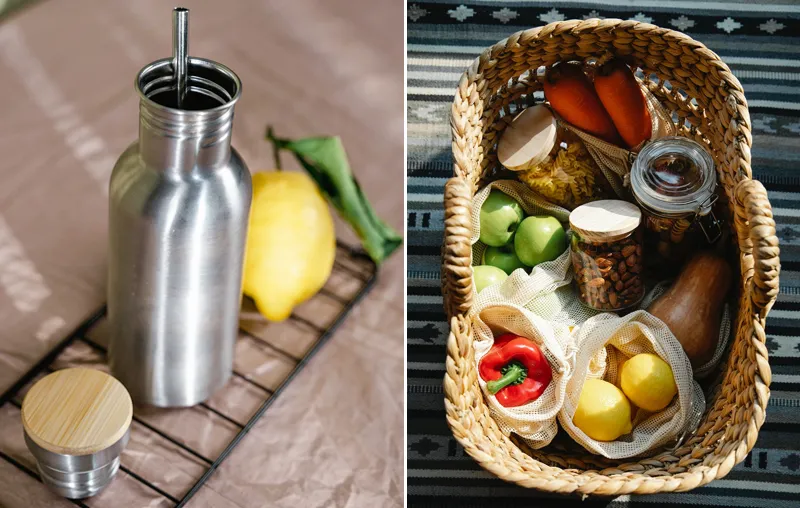Do you want a sunscreen that's free of questionable ingredients and will protect your Make sunscreen yourself? Then just give it a try! Making your own sunscreen for the skin is easier and faster than you probably think.
Here you get the right ingredients and a really simple recipe for your homemade sunscreen, as well as important tips to protect your skin from the sun.
Here is another short Table of contents for the article:
Make your own sunscreen - what to look out for
It is important that your homemade sunscreen protects against both UVB and UVA rays.
UVB rays penetrate only as far as the epidermis. They are responsible for the tanning of the skin, but also for sunburn. In addition, UVB radiation can cause cancer in the cells of the epidermis.
UVA rays have less energy than the UVB rays, but they penetrate deeper into the skin. They are responsible for sun-induced skin aging and can trigger allergies. In addition, there is evidence that UVA radiation can trigger black skin cancer.
Make sunscreen yourself - the ingredients
Here's a quick rundown of possible ingredients you can use to make your homemade sunscreen and what they do.
Coconut oil
To make your own sunscreen, you can use different basic ingredients. Coconut oil offers natural sun protection with a sun protection factor of about 7. However, this only protects against UVB rays, which is why you should not use coconut oil as the sole sunscreen!
For your homemade sunscreen, it's best to use cold-pressed organic coconut oil. Coconut oil moisturizes the skin and also contains antimicrobial fatty acids that prevent the proliferation of bacteria. You can get coconut oil in a reusable jar here*.
Zinc oxide
In order to achieve a higher SPF and protection, the homemade sunscreen also from UVA rays, you must also use a mineral filter.
Zinc oxide is suitable for this purpose. You can get zinc oxide at the pharmacy. For 50g I have paid about 3.50 €. By the way, my pharmacy doesn't want to fill jars that you bring with you, but they use paper bags for filling. So you get your zinc oxide plastic-free.
Important: Please make sure that the zinc oxide you use does not contain any nano particles, i.e. particles smaller than 100 nm. These can penetrate the skin.
Dosage of the zinc oxide

The amount of zinc oxide used depends on the sun protection factor you want to achieve. A proportion of 10% zinc oxide in the finished sunscreen gives an SPF of about 10. With 20% zinc oxide, your homemade sunscreen has an SPF of about 20. The percentages refer to the weight.
Example: 16g coconut oil plus 4g zinc oxide result in an SPF of approx. 20
Aloe vera
Aloe vera pure or as a gel has no SPF of its own. But due to its nourishing and moisturizing effect, it is suitable as an ingredient for your homemade sunscreen.
Aloe Vera Gel consists of cold-pressed aloe vera and provides the skin with abundant moisture. Here you get 100% natural Aloe Vera Gel*.
Make sunscreen yourself with coconut oil - recipe
I like it simple and that's why I use only a few ingredients for homemade sunscreen.
For my favorite recipe, all you need is:
- Coconut oil (you get here*)
- Aloe Vera Gel (you get here*)
- Zinc oxide (you can get it in the pharmacy)
Here's how you bring the ingredients together:
- Since coconut oil is either liquid or very solid, depending on the temperature, you may need to warm it up a bit before mixing in the other ingredients.
- Mix the coconut oil with aloe vera gel (I mix 50:50)
- Stir into this mixture the zinc oxide according to your needs (e.g. 20% zinc oxide for SPF 20).

And your homemade sunscreen is ready!
You can also modify the recipe by changing the mixing ratio between coconut oil and aloe vera gel or by mixing only coconut oil with zinc oxide.
Since coconut oil is solid at temperatures below 24°C, it is best to fill your sunscreen with coconut oil into a screw jar with a wide opening. The sunscreen also solidifies with mixed-in aloe vera gel.
If you want a liquid sunscreen at all temperatures, you can alternatively use other vegetable oils. Always make sure that they are cold-pressed oils in organic quality.
Overview of some alternatives to coconut oil
Olive oil also has an SPF of 7. Virgin olive oil in the bottle is available here*
Almond oil has a sun protection factor of about 4. Cold pressed almond oil is available here*
Sesame oil has a sun protection factor of about 2. Here you get native organic sesame oil*
Sun protection tips
Despite your homemade sunscreen, there are a few rules you should follow - your health will thank you 😉
 Avoid the blazing midday sun
Avoid the blazing midday sun- Apply sunscreen even in the shade
- Cream regularly after
- To protect your eyes as well, wear sunglasses (look for the CE mark).
- There is no such thing as complete sun protection - no matter how well you apply sunscreen, some UV radiation will always reach your skin. Therefore, even with sunscreen on, be aware and get out of the sun before your skin turns red!
Make sunscreen yourself? No problem!
As you can see, it's really not complicated to make your own sunscreen. Plus, it's fast and really fun!
Have you tried this or any other DIY sunscreen recipe? Do you have any tips or questions? Then feel free to write me a comment under this post!
Enjoy your homemade sunscreen and have a sunny summer!

PS: If the production is too time-consuming for you, then I can offer you these Sunscreen in jar recommend
PPS: You can find more tips & tricks for making your own care products, natural cosmetics, dishes and even furniture in the Do It Yourself Blog. Take a look! In particular, try our recipes for homemade toothpaste and homemade face scrub!






How do you prevent the zinc oxide from settling to the bottom? The solid particles fall to the bottom when the coconut oil cools down.
Hi Biggi. Stir and put in the fridge so that the coconut oil hardens. Just give it a try.
Best regards
Christoph
hello anja, i am totally excited about my first homemade sunscreen. will be tried soon (-; someone told me that coconut oil alone is suitable as a sunscreen, if you are not too long in the sun but rather much in the shade, because of low SPF - you write here in principle - and that it lets the so important vitamin D through, while normal sunscreen totally blocked, what do you know / do you know about it ? how will it behave with coconut oil in combination with the zinc oxide (and aloe vera) ? and will the homemade sunscreen also be applicable for babies and infants (because of zinc oxide) ? i am totally thrilled, as i stumbled upon this today, what you can do everything yourself. mad !!! love birgitt
Hello Birgitt,
Thank you so much for your lovely comment 🙂
How much solar radiation passes through the skin, ultimately depends on the amount of SPF. I have found information that at SPF 30 still 3.3% of radiation reach the skin, so that even with the important vitamin D can be formed.
With babies, of course, you have to be extra careful. Pediatricians recommend avoiding sunscreen altogether during the first year of life. However, if it is necessary, mineral sunscreen is also preferable here. Zinc oxide is also contained in many diaper creams for babies, for example. (e.g. in the Calendula baby cream from Weleda).
Best regards and have fun trying it out!
Anja
Woohoo,
Would like to sun protection factor 30
How many grams of zinc oxide do I need ?
Would like to mix 50g coconut oil and 50g aloe vera
Dear thanks
Hello Renate,
for a SLF of approx. 30 you need in your case approx. 40g zinc oxide.
This then results in a total of 140g of sunscreen. Thus, the 40g of zinc oxide correspond to 30.77% of the total mass and thus an SPF of about 30.
Have fun mixing 🙂
LG
Anja
Hello, I just made the sunscreen and I wonder: if I add 20g of zinc oxide to 100g of aloe coconut oil mixture, is that SPF 27?
20 from zinc oxide plus 7 from coconut oil?
Thanks already for the inspiration!
And: do you know how to extract aloe gel from the aloe plant itself and what to look for?
Hello Nora,
thank you for your comment!:)
20g of zinc oxide to 100g of aloe-coconut oil mixture gives a total of 120g - so the 20g of zinc oxide equals 16.7% of the total mixture. You should not simply add the SPF of the coconut oil, because coconut oil only protects against UVB rays and not against UVA rays.
I have not yet made my own aloe vera gel. However, you should be able to make it by separating out the contents, mixing them in a blender and then processing them immediately.
Love greetings
Anja
I like the recipe very, very much because it is simple and fast.
Question: How long is the shelf life of the mixture?
Hello Conny,
Thank you very much for your comment. I'm glad you like the recipe so much 🙂
Since it is so easy and fast, I also make only a fairly small amount at a time. I recommend to use up the cream within a month.
Love greetings!
Anja